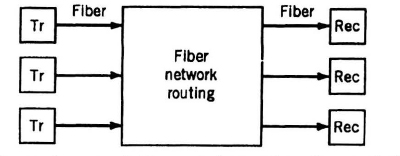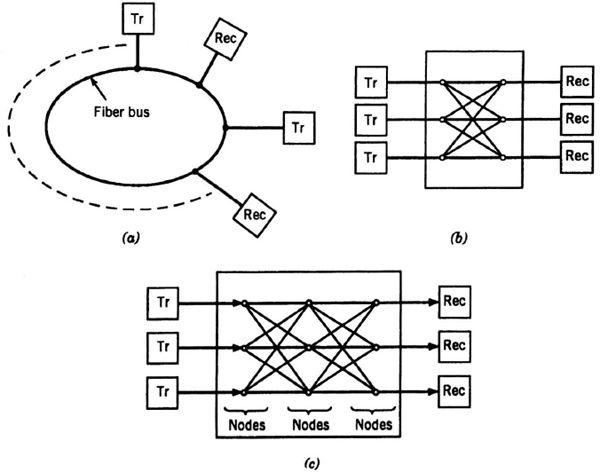8.2 NETWORK ARCHITECTURES
The fiber interconnect devices can be used to distribute multiple source data over an optical network. Figure 8.4 shows a generalized block diagram representing a basic fiber network architecture that may be designed into a local, metropolitan, or wide area network. A set of N optical transmitters are to be interconnected to N separate receivers through a fiber interconnection system. Any receiver should have the capability of receiving any transmitter, and conversely any transmitter should be able to transmit to any particular receiver. These distribution requirements can be achieved in several ways. The most basic is to route the transmissions from all transmitters to all receivers, and use multiple accessing techniques to separate the transmissions. Multiple accessing is a communication format that uses a form of transmitter signal addressing that permits its transmission to be distinguished from all others. Multiple accessing in optical systems is discussed in Section 8.5.

Figure 8.4. Fiber routing network. Tr = optical transmitter, Rec = optical receiver.

Figure 8.5. Network architectures. (a) Bus. (b) Star. (c) Layered nodes.
Another network interconnection procedure is to connect each transmitter to a specific receiver and periodically, or upon command, ...
Get Optical Communications, 2nd Edition now with the O’Reilly learning platform.
O’Reilly members experience books, live events, courses curated by job role, and more from O’Reilly and nearly 200 top publishers.

